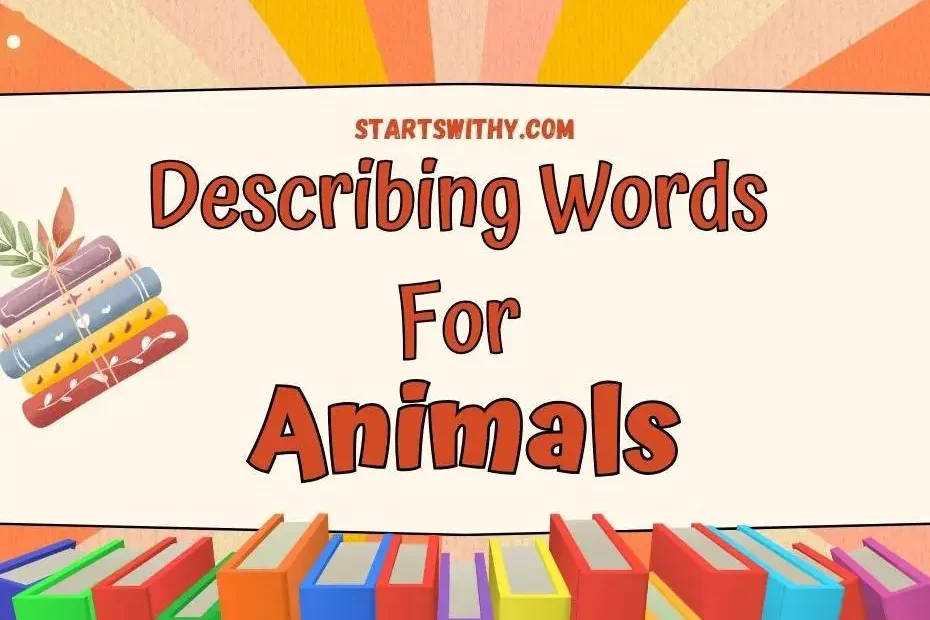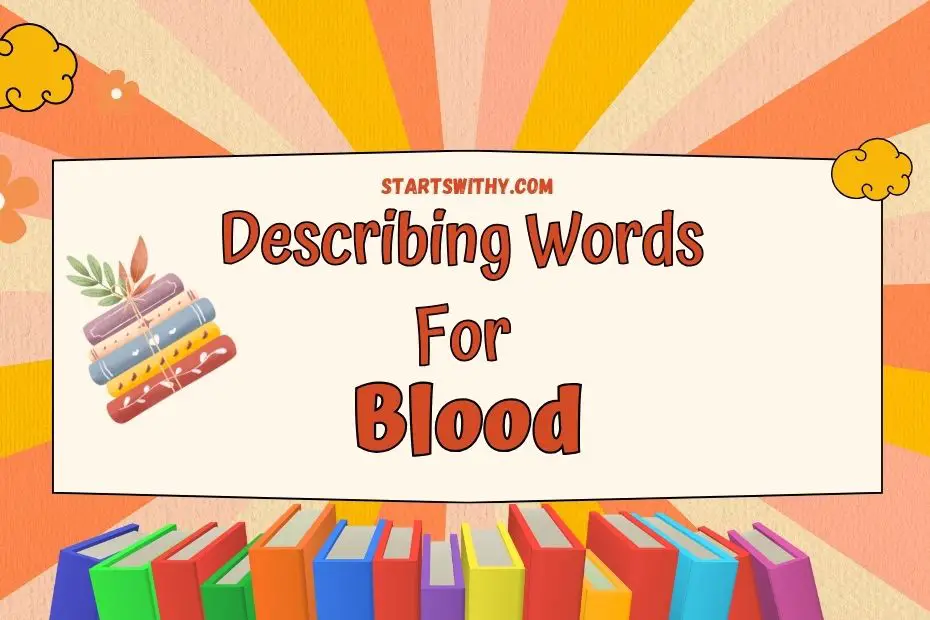Animals are fascinating creatures that come in all shapes and sizes. From the majestic lion to the tiny hummingbird, each animal possesses unique characteristics that make them truly remarkable. In this article, I’ll explore a variety of adjectives that can be used to describe these incredible creatures. Whether you’re a nature enthusiast, a writer looking to add depth to your descriptions, or simply curious about the diverse world of animals, this article is for you. Get ready to dive into the world of adjectives for animals and discover new ways to bring these magnificent creatures to life in your writing.
How to Describe Animals? – Different Scenarios
When it comes to describing animals, there are various scenarios to consider. Here are some tips and techniques to help you accurately and vividly describe these fascinating creatures:
1. Physical Appearance:
When describing an animal’s physical appearance, it’s important to provide specific details that paint a clear picture in the reader’s mind. Consider the following elements:
- Size: Describe the animal’s size using adjectives such as small, large, tiny, or massive.
- Shape: Is the animal round, slim, or elongated? Use appropriate adjectives to convey its shape accurately.
- Color: Mention the animal’s color or combination of colors to provide a vivid description.
- Texture: Does the animal have fur, feathers, scales, or a smooth skin? Describe its texture with appropriate adjectives.
Example: The majestic lion stood tall, with its golden mane flowing in the wind, its powerful body exuding strength and grace.
2. Behavior and Movements:
Describing how an animal behaves and moves helps bring it to life in writing. Consider these aspects:
- Motions: Describe how the animal moves. Is it slow, graceful, or erratic? Use words like slithering, leaping, or trotting.
- Habitat: Mention where the animal lives and how it interacts with its environment.
- Hunting or Feeding: Describe how the animal hunts or finds its food. Is it a strong predator or a gentle grazer?
Example: The nimble squirrel gracefully leaped from branch to branch, as it searched for the ripe acorns to store for the winter.
3. Categorizing Animals:
To further enhance your description, you can categorize animals based on their characteristics. Consider classifying them as:
- Wild or Domestic: Differentiate between animals found in the wild, such as tigers and bears, and those domesticated, like cats and dogs.
- Predatory or Prey: Describe whether the animal is a predator or prey, highlighting its role in the ecosystem.
Example: The sleek cheetah, known as the fastest land animal, roams the vast African savannah in search of its next meal.
Describing Words for Animals in English
When it comes to describing animals, it’s important to choose the right words to accurately convey their characteristics. In this section, I’ll share with you some common adjectives used to describe animals in English. These words will help you teach easy words to kids and create engaging and informative descriptions.
Let’s dive in and explore these descriptive words:
Physical Appearance
When describing an animal’s physical appearance, we can use adjectives that capture their unique features. Here are some examples:
| Adjective | Example |
|---|---|
| Furry | The cat has a furry coat. |
| Spotted | The cheetah has spotted fur. |
| Scaly | The lizard has a scaly skin. |
| Feathery | The bird has feathery wings. |
| Striped | The tiger has striped fur. |
Behavior and Personality
Animals, like humans, have distinctive behaviors and personalities. Here are some adjectives to describe the way animals behave:
| Adjective | Example |
|---|---|
| Playful | The puppy is playful. |
| Curious | The cat is curious. |
| Territorial | The lion is territorial. |
| Graceful | The swan is graceful. |
| Agile | The monkey is agile. |
Characteristics
Certain adjectives are used to describe the characteristics of animals. These words highlight specific traits that make them unique:
| Adjective | Example |
|---|---|
| Majestic | The eagle is majestic. |
| Endangered | The panda is an endangered species. |
| Nocturnal | The owl is nocturnal. |
| Herbivorous | The cow is herbivorous. |
| Carnivorous | The lion is carnivorous. |
Adjectives for Animals
Positive Adjectives for Animals
When it comes to describing animals, there are plenty of positive adjectives that can be used to bring these fascinating creatures to life. Here are twelve examples of positive adjectives that can be used to describe animals:
| Adjective | Definition | Example Sentence |
|---|---|---|
| Graceful | Having elegance and smoothness in movement | The swan glided across the lake with graceful movements. |
| Intelligent | Having a high level of mental capacity | Dolphins are known for their intelligent behavior. |
| Playful | Full of energy and fun | The puppy was playful, chasing its tail and wagging with excitement. |
| Majestic | Having grandeur and dignity | The lion stood proudly on the rock, displaying its majestic presence. |
| Curious | Eager to know or learn something | The monkey’s curious nature led it to investigate every object in its path. |
| Affectionate | Showing warmth and tenderness | The cat curled up in my lap, purring and showing its affectionate side. |
| Loyal | Dedicated and faithful | Dogs are often known for their loyal nature towards their owners. |
| Agile | Nimble and quick in movement | The cheetah is an agile predator, able to chase down its prey with incredible speed. |
| Gentle | Having a mild and kind nature | The horse nuzzled against the child, showing its gentle and caring side. |
| Resilient | Able to recover quickly from difficult situations | Despite the harsh conditions, the cactus proved to be resilient and continued to thrive. |
| Beautiful | Pleasing to the senses or aesthetic | The butterfly’s colorful wings made it a beautiful sight to behold. |
| Trustworthy | Reliable and deserving of trust | The guide dog proved to be trustworthy, leading its blind owner safely across the busy street. |
Negative Adjectives for Animals
While most animals have admirable qualities, there are some negative adjectives that can be used to describe certain traits or behaviors. Here are five examples of negative adjectives that can be used to describe animals:
| Adjective | Definition | Example Sentence |
|---|---|---|
| Aggressive | Displaying hostility or violent behavior | The wild boar acted aggressively, charging at anyone who came too close. |
| Sneaky | Acting in a secretive or deceitful manner | The cat would silently tip-toe towards the bird, displaying its sneaky nature. |
| Stubborn | Refusing to change one’s course of action | The stubborn mule refused to move, no matter how much we encouraged it. |
| Dangerous | Poses a threat to safety or well-being | The venomous snake is a dangerous creature, capable of inflicting harm. |
| Destructive | Causing extensive damage or destruction | The beaver’s habit of chewing through trees can be destructive to forests. |
These adjectives, both positive and negative, can be used to create engaging and informative descriptions of animals. Whether teaching children or simply expressing your admiration for these incredible creatures, these words can help bring your descriptions to life.
Synonyms and Antonyms with Example Sentences
Synonyms for Animals
When it comes to describing animals, using a variety of adjectives can make your writing more engaging and informative. Here are some synonyms for commonly used animal adjectives that you can include in your descriptions:
| Synonym | Definition | Example Sentence |
|---|---|---|
| Graceful | Moving with elegance and beauty | The swans glided across the lake with graceful movements. |
| Intelligent | Having the ability to think and understand | Dolphins are known for being highly intelligent creatures. |
| Playful | Full of fun and joy | The puppies chased each other in a playful manner. |
| Majestic | Having grandeur or dignity | The lion stood proudly, displaying its majestic mane. |
By incorporating these synonyms, you can bring richness to your descriptions and capture the unique qualities of different animals. Remember to choose the synonym that best fits the specific animal you are describing to create a vivid image in the reader’s mind.
Antonyms for Animals
While positive adjectives can paint a beautiful picture, using antonyms provides a contrasting perspective and adds depth to your writing. Here are some antonyms for commonly used animal adjectives:
| Antonym | Definition | Example Sentence |
|---|---|---|
| Aggressive | Tending to behave with anger or hostility | The snarling dog was aggressive and ready to attack. |
| Sneaky | Acting in a secretive or sly manner | The cat moved sneakily through the tall grass, stalking its prey. |
| Stubborn | Refusing to change one’s mind or course of action | The stubborn mule refused to move, no matter how much we urged it. |
| Dangerous | Poses a risk or threat of harm | The venomous snake is considered one of the most dangerous creatures in the jungle. |
| Destrucive | Causing great damage or harm | The destructive force of the hurricane left a path of destruction in its wake. |
Using antonyms in your descriptions can highlight the contrasting characteristics of animals and add depth to your writing. Remember to choose the appropriate antonym to convey the specific trait or behavior you want to emphasize.
By incorporating synonyms and antonyms into your descriptions, you can make your writing more engaging and informative. Whether you are teaching children about animals or expressing your admiration for these creatures, using a diverse range of adjectives will help you create vivid and captivating descriptions.
Conclusion
In this article, I have discussed the importance of accurately describing animals and provided a comprehensive list of synonyms and antonyms for commonly used animal adjectives. By incorporating these words into their descriptions, writers can create more engaging and informative content. It is crucial to choose the appropriate word that conveys the specific trait or behavior being described, whether it is gracefulness, intelligence, playfulness, majesty, aggression, sneakiness, stubbornness, danger, or destructiveness. By utilizing these adjectives effectively, writers can paint a vivid picture in the minds of their readers, allowing them to truly understand and appreciate the unique characteristics of each animal. So, the next time you sit down to write about animals, remember to choose your adjectives wisely and bring your descriptions to life. Happy writing!



